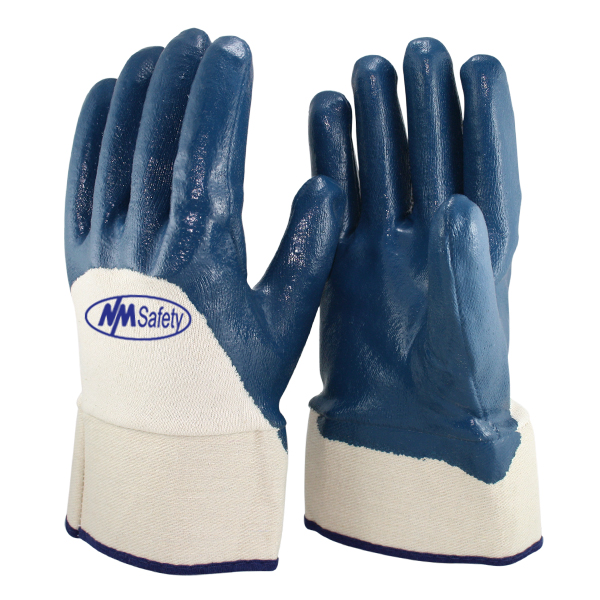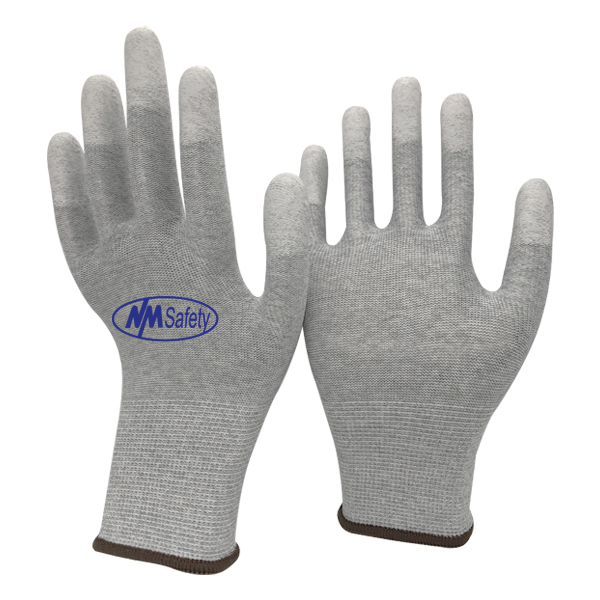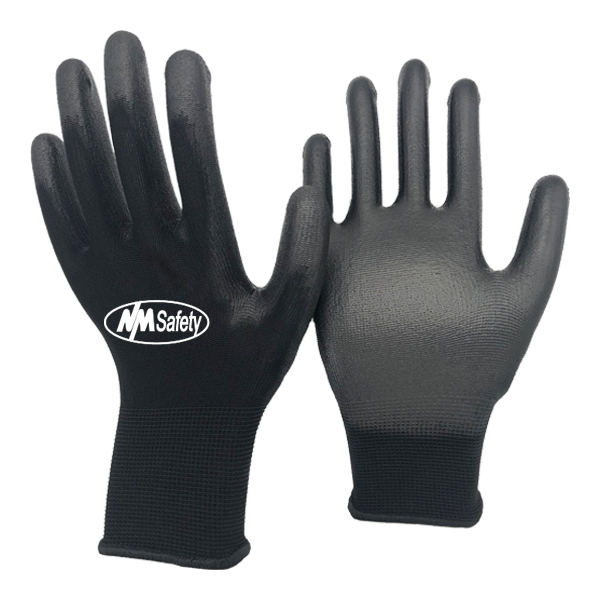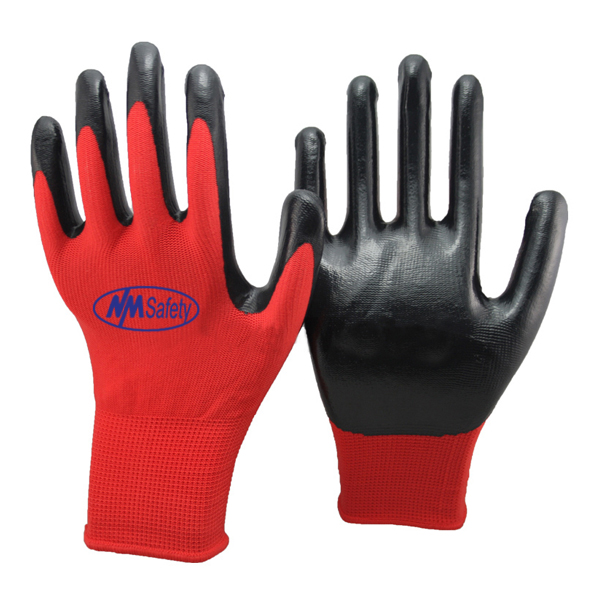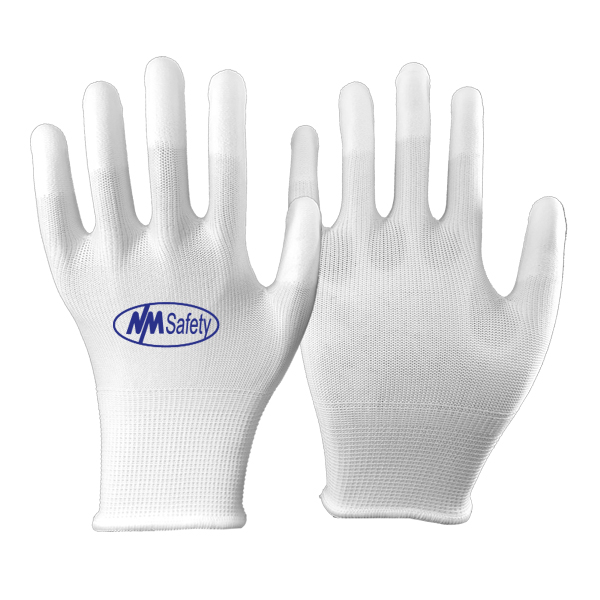What is a gloves' safety cuff?
The safety cuff is usually used with nitrile gloves and most commonly used with general work gloves, such as those used in construction and industry. When worn in high-temperature conditions, safety cuffs prevent wrist abrasion and allow wrist ventilation. A safety cuff protects the wrist. It has an open cuff for ventilation and fast removal.
Use of Safety Gloves:
Safety gloves are hand garments that protect the wrist, hand, fingers, and thumbs from potentially harmful processes or circumstances. These products have nearly endless applications in both industrial and commercial settings. The material and design of the heavy-duty gloves determine their functionality.
Heavy-duty gloves are for many tasks, but they may also be suited for different tasks. Heat/chill resistance, puncture and cut resistance, static control, chemical resistance, flame resistant, anti-contamination, enhanced grip, waterproofing, and hand visibility are the most prevalent reasons to wear safety gloves. The glove's material and design determine which applications are appropriate for work. If work involves safety gloves, you should use other PPE.
Types of Gloves:
Types of gloves are the following:
Aircrew Gloves:
Aircrew gloves keep a flight crew's hands warm while also providing flame protection, water resistance, and improved instrument control grip.
Anti Vibration Gloves:
Anti-vibration gloves keep a worker's hands safe while using oscillating tools like jackhammers or drills. They frequently have some puncture resistance.
Antistatic Gloves:
Antistatic gloves decrease dust-collecting electrostatic charges. When handling fragile components, Electric static can spread by the construction materials.
Chemical Gloves:
Chemical gloves handle chemicals safely, including harmful acids and bases. Because some materials become brittle, hard, stiff, broken, or weak in the presence of specific substances, a wide range of materials is available. There are several different thicknesses and surface finishes from which we can choose. They might be a waste.
Variants:
Individual leather sheaths that protect fingertips against cuts during woodworking and other bladed hand tool operations are considered finger guards. They are made of leather and spandex and do not provide palm or knuckle protection. Handguards are essentially fingerless gloves, whereas finger guards are essentially fingerless gloves. The main benefit of handguards is that the fingers and thumb remain exposed, allowing for unrestricted mobility. These devices put fingers in danger while keeping the palm safe. Finally, gloves with two sections are more thermally efficient than gloves, despite their absurd appearance. Industrial mittens may be helpful in extremely cold or hot settings when finger expressiveness is unimportant.
What is Nitrile Half Coated Gloves Safety Cuff?
Half-coated nitrile gloves a safety cuff is a protective device that protects the wearer from harmful substances because they are resistant to oils, solvents, and other chemicals. Nitrile gloves are a popular choice for people working in hazardous areas. Nitrile-coated gloves increase safety by ensuring that the gloves do not come into touch with the substance we are handling.
Application:
Processes abrasives in construction and metal fabrication, thick rubber chemicals in resistant fuels, rough castings and steel fabrication, soil drilling, paint and varnish fabrication, and is perfect for transporting mineral oils, trash removal, petrochemical and refining, and gasoline/tanker driver. Chemical or biological risks can be absorbed through the skin, resulting in chemical or thermal burns, electric shock, bruising, abrasions, cuts, punctures, fractures, or amputations.
Advantages:
- Water Proof
- Oil Proof
- Warm
Features:
- Safety Cuff nitrile-coated glovesare ideal for jobs that demand good grip and dexterity.
- Skin-friendly for all fingers. With a professional manual closure, made of lightweight 15-gauge nylon and spandex.
- Except in light oil and deep water, it is non-dehydrating, resists slippage on pipes or hard surfaces, and excels in many jobs.
- Stretch is a cost-effective option that is easy to wash and use again. Grey and white are a stylish combination.
- Wrist cuffs are tight elastic knit. Ideal for multi-purpose functional jobs in vehicles, HVAC, warehouses, plumbing, case handling, precision assembly, building, gardening, shops, logistics, indoor, outdoor, and yard for men, women, youth, and children.
- Gloves with half fingers Knitted wrist nitrile dipped gloves are known for blue cotton Nitrile safety gloves.
- Half-dipped refers to the back of gloves that do not have a coating on the surface. It is also known as open-back gloves in some locations.
When we talk about a comparison to full-dipped gloves, this form of the glove has better ventilation, making it more pleasant to use in a specific environment. Although nitrile-coated gloves are not new to the market, they are still as effective as they were the first introduced, and many workers rely on them daily to keep their hands safe while working.
Inspection, Use, and Care:
- Before using heavy-duty gloves, check for signs of deterioration or puncture. Pinholes are detectable by blowing or trapping air inside and rolling it out.
- When there is any hint of contamination, disposable gloves should change.
- If you're going to use reusable gloves for a long time, you should wash them periodically.
- Wearing heavy-duty gloves, be careful not to handle anything other than the procedure's supplies.
- Contamination is spreadable through touching equipment, phones, wastebaskets, and other surfaces. Keep your hands away from your face, hair, and clothing.
Wash the outside of the glove before removing it. Remove the first glove by grabbing the cuff and peeling it off the hand such that the glove is inside out to avoid accidental skin exposure. Rep, on the other hand, this time contacting the inside of the glove cuff instead of the outside. Hands should wash with soap and water right away.
Conclusion:
We should strictly follow the instructions and wear safety gloves as they protect us in many ways. They play a role in ensuring keep everyone safe from hazards during work in factories and industries. We should not take safety lightly because it can cause heavy damage. You can buy nitrile half coated safety Cuff gloves from NM safety. NM safety provide gloves at an affordable price. We can put trust in them.





